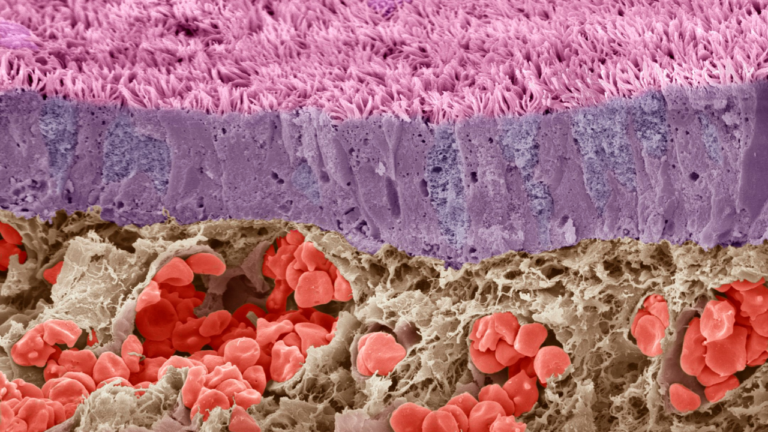What Is Nervous Tissue?

Nervous tissue is one of the four main types of tissue found in the human body, along with epithelial, connective, and muscle tissue.
It is responsible for transmitting and processing information throughout the body. Nervous tissue is composed of two main types of cells:
Neurons and
Neuroglia.

Neurons are the primary cells of the nervous system. They are responsible for transmitting electrical impulses, or signals, throughout the body.
A typical neuron has three main parts:
The cell body
Dendrites, and
Axon.
The cell body contains the nucleus and other organelles, while the dendrites receive signals from other neurons and the axon transmits signals to other neurons or to muscles or glands.

Neuroglia, also known as glial cells, are supportive cells that help to protect and nourish neurons. They also help to form the structural framework of the nervous system.
There are several types of neuroglia, including astrocytes, oligodendrocytes, and microglia.
Astrocytes help to support and nourish neurons,
while oligodendrocytes produce myelin, fatty insulation that surrounds axons and helps to increase the speed of neural impulses.
Microglia help to protect the nervous system from harmful invaders such as bacteria and viruses.
The nervous system is divided into two main parts:
The central nervous system (CNS) and
The peripheral nervous system (PNS).
The CNS is made up of the brain and the spinal cord, and it is responsible for processing and interpreting information.
The PNS is made up of the nerves that connect the CNS to the rest of the body, and it is responsible for transmitting signals to and from the CNS.
The nervous system is also divided into two main types of signals:
1. Sensory and
2 Motor.
Sensory signals are transmitted from the body to the brain and spinal cord, while motor signals are transmitted from the brain and spinal cord to the body.
Sensory signals are responsible for the sense of touch, sight, sound, taste, and smell. Motor signals are responsible for controlling movement, such as muscle contraction.
In conclusion, nervous tissue is an essential component of the human body, playing a vital role in transmitting and processing information throughout the body.
Understanding the structure and function of nervous tissue can help us to better understand how the brain and nervous system work, how to take care of our health, and how to prevent or treat disorders and diseases of the nervous system such as Alzheimer’s, Parkinson’s and multiple sclerosis, etc.
It’s important to note that anatomy and histology are vast fields that cannot be covered in a single answer, it would be beneficial to consult relevant and updated textbooks and consider taking a course or joining a study group to master the material.
If you’re serious then you must check anatomqacademy to Master General Anatomy and Histology with a special memory remaining technique that just not only helps you remember whatever you learn forever, it also helps you in increasing higher grades in other subjects.
Here is the link: Master General Anatomy and Histology with which you get the Memory Retention Program absolutely for FREE
Thank you.




